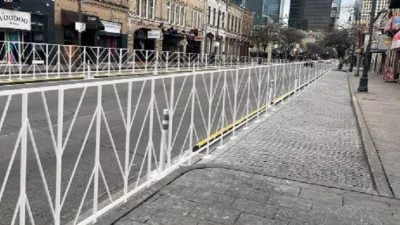The Austin City Council and Capital Metro met on Tuesday for their first joint session of the year, and a discussion over a long-range vision of high-capacity transportation was front-and-center. Capital Metro unveiled a series of proposals to address public transit in Austin in the coming years.
Austin Mayor Steve Adler says traffic and mobility are among the biggest challenges he hears about from the people of Austin.
“Everybody’s been complaining and complaining about traffic in this city to an ever-increasing degree,” he said. “We have a chance to actually do something about it fundamentally.”
For years, there have been far more questions than answers when it comes to how Austin should address its mobility woes. According to Capital Metro, there are a lot of things that can be done, but all of them would require a digging deep into pocketbooks.
As expected, a larger system of dedicated bus lanes was discussed. However, Capital Metro says it’s possible the bus system could reach full capacity by 2040, meaning the city may end up spending big bucks on an a soon-to-be-antiquated mode of transport. It’s because of that concern that support for light rail appears to be picking up steam at City Hall. Capital Metro has proposed an extensive light rail line, including an underground tunnel beneath downtown Austin to alleviate backups from stoplight to stoplight, and backups created by cars getting stuck behind buses.
“We’re going to want, at some point, to be able to have a rail that has more than three cars. And when you go to other cities, you have five cars, six cars, seven cars, eight cars that are being pulled along, and we can’t do that downtown at our surface because our blocks aren’t long enough,” Adler said.
Winning support for light rail has been an ongoing challege in Austin.
Yet another proposal is to elevate public transportation lanes above general lanes of vehicle traffic, freeing up space below in the process.
Estimates range from more than $2-billion to more than $12-billion. Federal dollars could be available to cover about 40-percent of the cost, but that money would be contingent upon a sizeable, long-range investment into public transporation by local leaders.
Locally, the financial load could be more than $7-billion after federal dollars are applied. Of course, that begs the question of where the city might drum up that remaining money. The city and Cap Metro say there are a handful of funding options from which to choose.
One of the most common methods in recent years has been calling for a bond election in which voters decide whether or not to allow the city to borrow a lump sum of money. Another possibility is a tax rate election. Due to a new state law limiting most taxing entities to property tax increase of 3.5-percent, council would need voter approval in order to raise that rate any higher. However, if voters did say yes to a tax increase beyond 3.5-percent, it could provide the city with a constant stream of revenue to be put toward the long-range transportation plan. Adler said Tuesday he is definitely on-board.
“I like it, in part, because it’s the most transparent public election that you can have because it reflects the costs, not just the capital costs, but the M&O costs, and the operational costs, and the government costs,” he said
Alternatively, there has also been talk about a Tax Increment Reinvestment Zone, which is defined as a political subdivision of a municipality or county in Texas created to implement tax increment financing. They may be initiated by a city or county or by petition of owners whose total holdings in the zone consist of a majority of the appraised property value. If that option is chosen, it would give the city the green light to create a lifetime budget for that specific zone, with tax collections being put toward various projects within its boundaries.
In March, Capital Metro is expected to make a recommendation on which specific projects should move forward, and a decision could be made by May. If a bond election is called, voters would likely make that choice in November.





